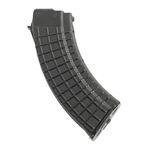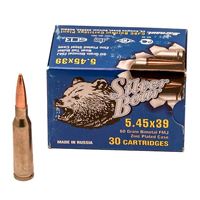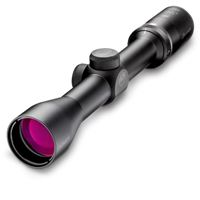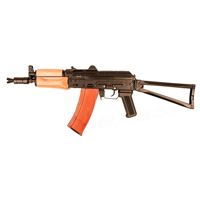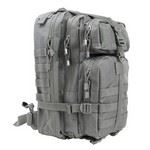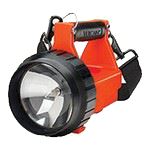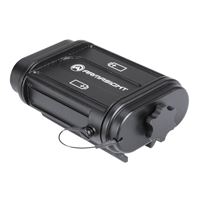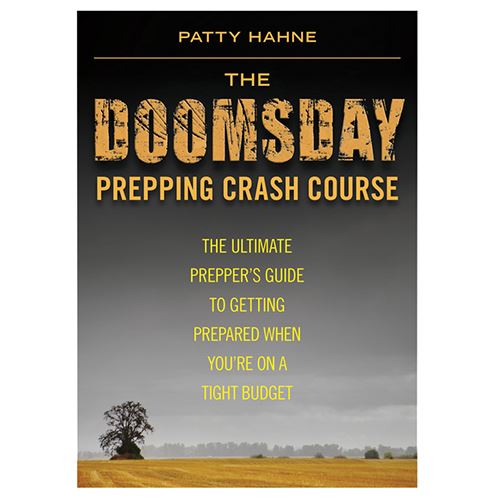The .30-06 Springfield has been my favorite rifle cartridge for 40 years. The power accuracy and ease of use are unrivaled. I have enjoyed handloading the cartridge for over 30 years. But loading the .30-06 for a bolt action rifle, and loading for a semi-automatic rifle such as the M1 Garand, are two different skills requiring different approaches.

Recently, I have been firing the old warhorse more often and find the Garand a well-mannered rifle well worthy of some effort in mastering. Mastering such a rifle demands economical ammunition. Producing good accuracy with the rifle means carefully crafted handloads. You are not likely to produce the best results with foreign surplus loads or even our own generic ammunition.
Recently, I ran a class of shooters through a simple course that centered upon the M1 Garand. I also took along an M1 Carbine, Mosin Nagant sniper rifle, and a semi-automatic Thompson rifle. Many of the young men were military officers. Their assessment of the carbine and the Thompson was less than complimentary compared to the modern M4 5.56mm carbine they were issued. The Russian sniper rifle generated some interest, but the star of the show was the M1 Garand.
With a minimal instruction period all did well with the World War II battle rifle. There were no failures to feed and no ‘M1 thumb.’ While we used a good supply of Winchester ammunition, we also used reliable handloads. It is worth noting that the young men felt that in certain situations, the Garand would perform well even on today’s battlefield. If the action were at ranges greater than 200 yards, many felt the M1 Garand was superior to the modern small caliber assault rifle.
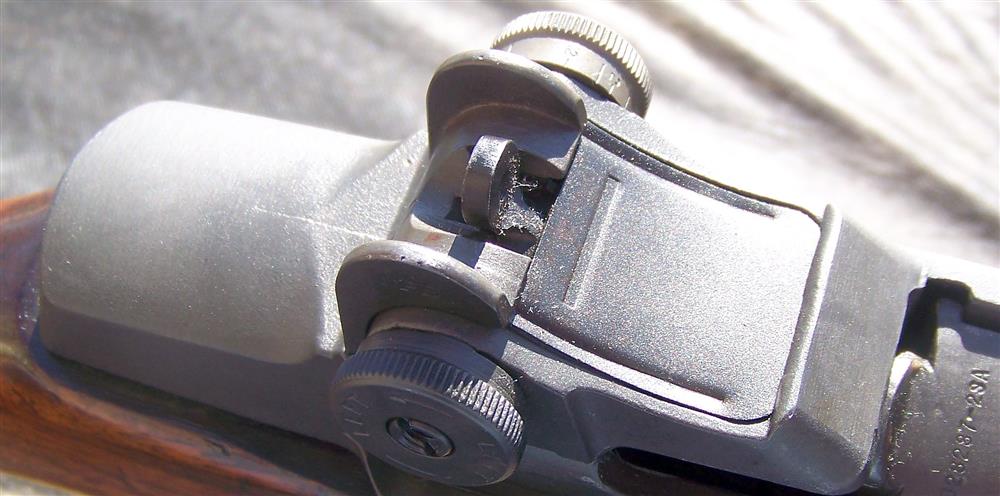
Without any opinion offered by the author, these young men and women recognized the Garand as a tremendous battle rifle that deserves our respect. Since my sons and I enjoy the Garand, the problem of feeding the rifle is a matter that must be solved. While quite a piece of history, we do not set and admire the finish but rather use the rifle often.
There is relatively inexpensive ammunition available for the rifle, but some of the foreign stuff is pretty sad. An exception to the ‘foreign’ tag is Fiocchi ammunition, but then much of these are manufactured in Ozark Missouri. Quality control is excellent.
Federal’s American Eagle loads are very good, and so is Hornady M1 Garand ammunition when you can find it. However, handloading is the obvious means to the end when inexpensive ammunition and accuracy are combined.
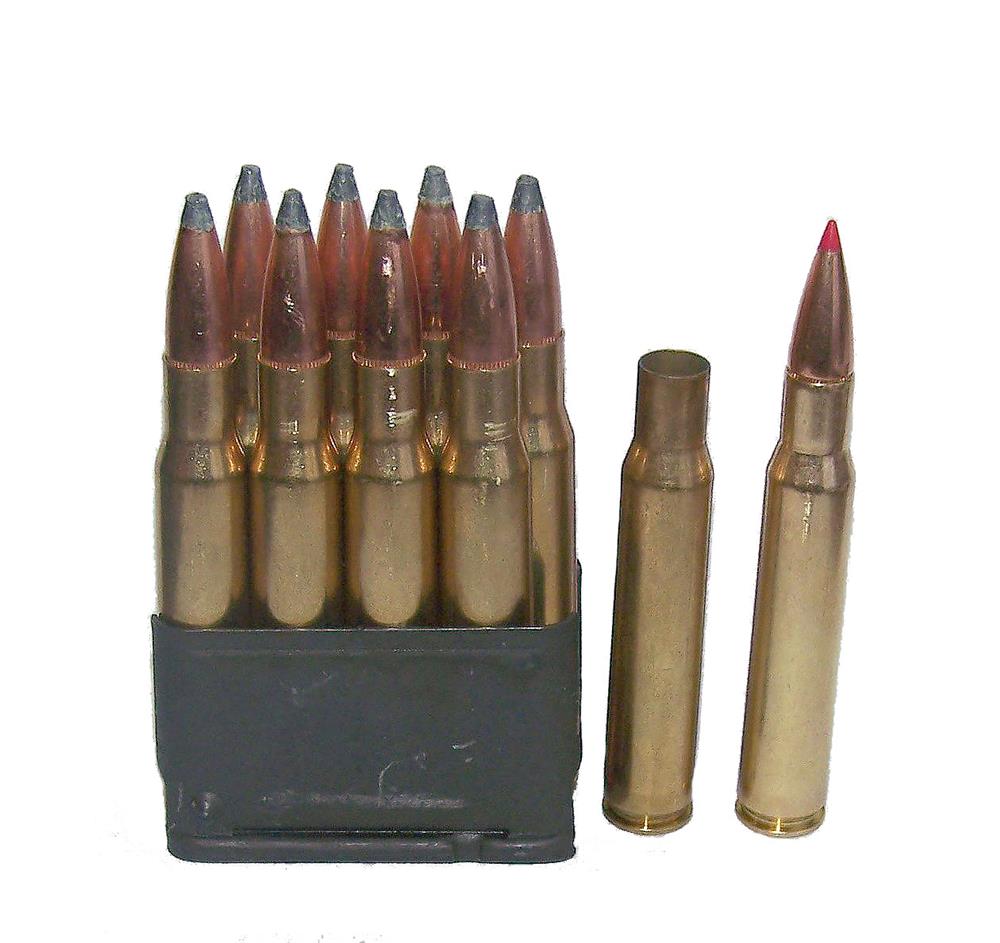
My personal rifle is not a wartime rifle, but a rebuild comprised primarily of Beretta parts. As such, it is not well worn, and the parts are of high quality. The PB marked stock does not bother me at all. It is a good rifle but not too valuable to fire.
The rifle is accurate enough that the pursuit of an accuracy load was worthwhile. When loading the Garand, the first hurdle is getting a firm grasp of the differences between loading for a bolt gun and loading for a self-loader. You must have perfectly-sized ammunition, and you must load within the pressure limits of the system—without battering the rifle.
Preparing to Load for the M1 Garand
I began by ordering a set of small base dies from RBCS. These dies size the cartridge case to a minimum tolerance. Some claim the Garand chamber is sloppy and small base dies are not needed. I erred on the side of caution. The Rock Chucker press gives sufficient leverage to allow rapid and sure full-length resizing. Let me state strongly that this is not the rifle to play with in loading. You cannot work up 110-grain high-velocity varmint loads, and you cannot work up 220-grain bullet heavyweight loads. You cannot produce loads that lap at the heels of the .300 Magnum as you may with a bolt action rifle.
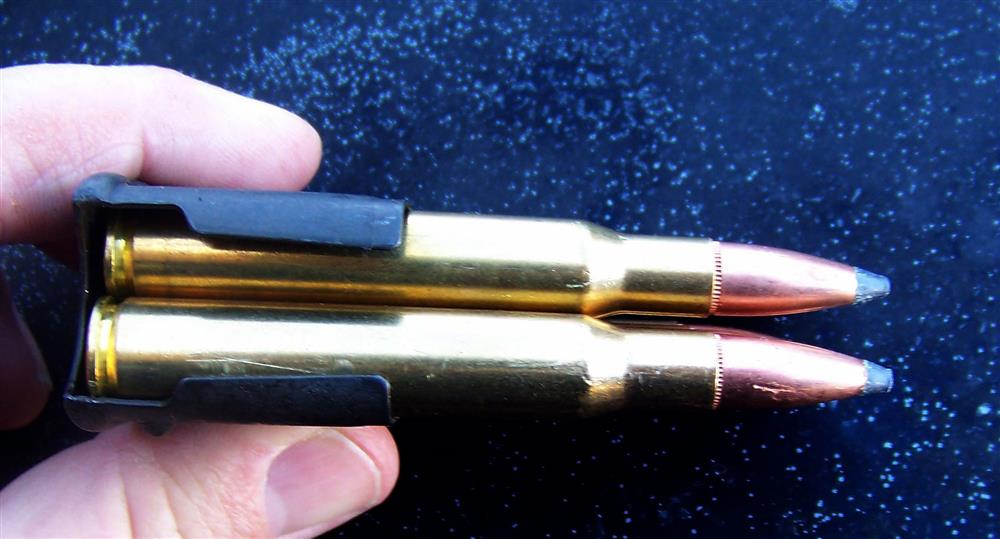
The self-loader works upon a narrow spectrum of performance. Bullet weight and powder choice are critical. I cannot comment on problem powders and bullet weights, because I took the route of researching my choices and avoided trouble. Reliable sources gave me a base for procedure, and I followed that procedure. I went by the book. Just the same, there is room for experimentation within acceptable parameters and bullet and powder choices are abundant.
Cartridge Cases
First, let’s look at cartridge cases. There are those who recommend we used only once-fired military brass. That’s OK as far as it goes, but these are getting old and difficult to come by. A friend supplied some 200 mixed once-fired Winchester and Federal cases, which was an excellent starting point. I also had on hand 100 new, unprimed Norma cases from Graf and Sons. On top of that, I had on hand 100 once-fired PMC cartridge cases, but they did not prove suitable for multiple loadings.
Which brass was best in the long run? The expensive Norma brass worked well. One goal was to produce a reliable load for firing three or four rounds quickly at distant targets. Another load target was accuracy at 100 yards. Some brass will last three or four loadings, others a few more. This is simply the reality of loading with a self-loading rifle. The case is beat up both on loading and in extraction and ejection, and the case mouth will split more often than with bolt guns. Plus, the case is being worn and worked by multiple full-length resizing cycles.
Powder Selection
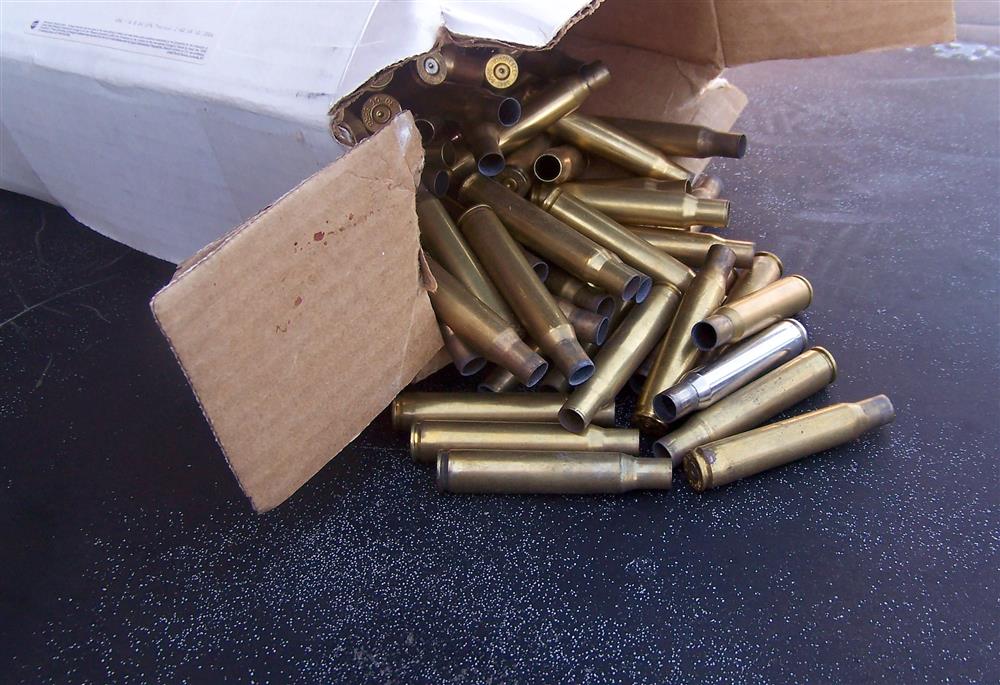
Powder selection is critical. The military loads enjoyed a clearly specified burn rate for use in our first self-loading military rifle. These powders enjoy a burn rate in the middle range, neither the fastest burning nor slowest. Powders burning slower may create excess pressure in the Garand. The operating rod and gas tube could be damaged by excess pressure.
I began with the Accurate line of powders, including Accurate 2495 and Accurate 4064. I also used the classic original and dependable IMR line of powders. During my load program, there was considerable discussion with experienced shooters concerning a common load practice with the Garand. A once common practice I avoided was removing the projectile from service ammunition and replacing it with a premium bullet. There is more to the equation than the bullet!
In any case, I tend to fire old loads. I would not wish to seat a Match Grade 168-grain bullet over a powder charge intended for 150-grain bullets. Today, Lake City match ammo is treasured for what it is, and this expedient is less common.
Bullets
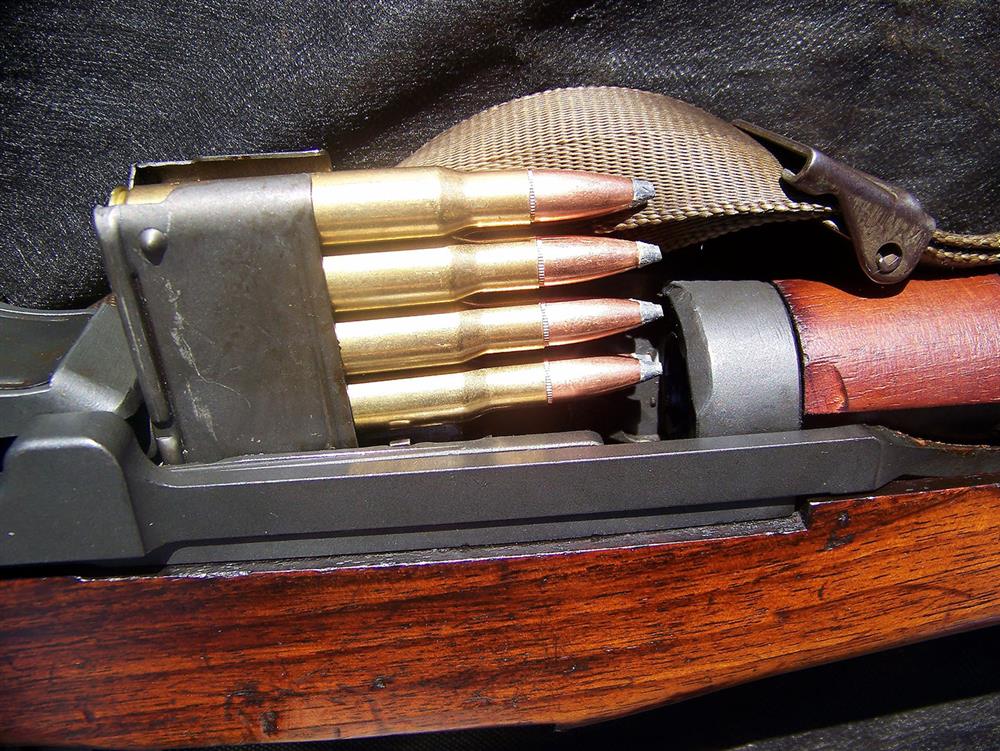
As for bullets, I used what I could obtain during a time of shortage, but the loads used were very good choices. (As I deliver this feature, there is no shortage! Plan ahead, there are always times of need along the lifetime of a shooter.) These included the Hornady 150-grain JSP, Sierra Palma 155-grain, a match grade bullet, and the Nosler 168-grain BTHP. I also used a few loads incorporating the Barnes X bullet.
It was quite interesting to fire several match-grade, modern hunting bullets in the Garand and even more interesting to see the bullets group so well. As for feed reliability, the Garand is superior to many bolt action rifles in this regard. As an example, the Garand feeds JSP loads more reliably than the Krag rifle, which I have also loaded extensively for.
The bullets feed straight into the chamber, skipping the feed ramp. Feed angle is not a problem. Overall cartridge length must be kept at the length of GI ball, but this is no problem with the loads tested. A good, tight crimp was used. The bullets never moved during recoil, and I often checked the last bullet in the clip to be certain that my crimp was adequate. It is bullet #8 that has taken seven poundings! The Garand does not beat bullet noses up.
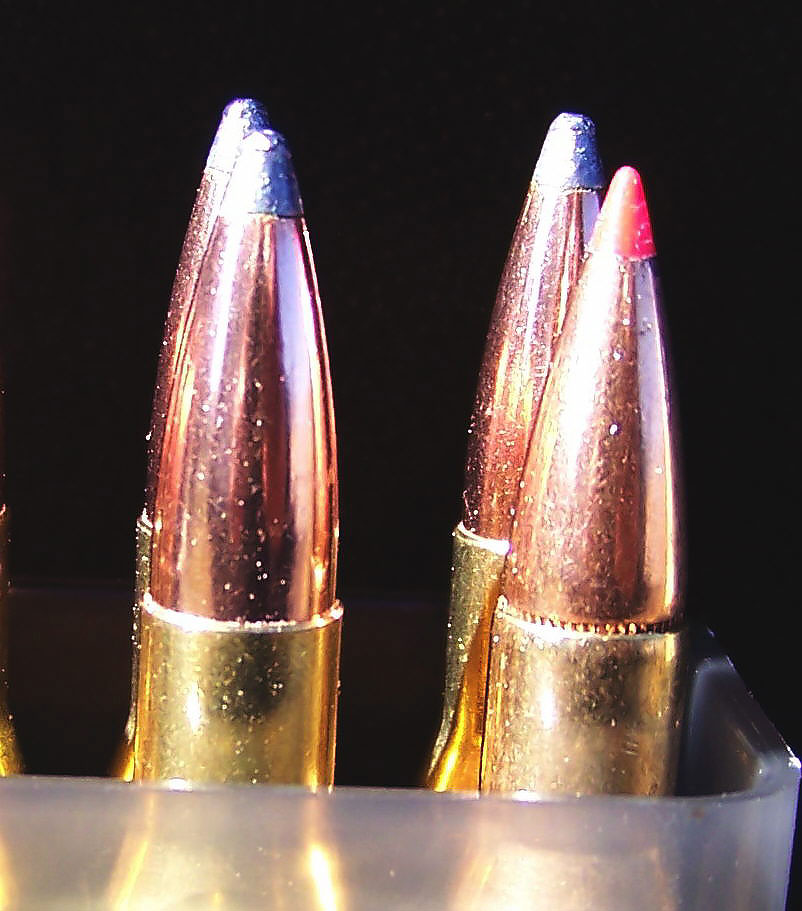
With the RCBS small-base dies in use, there were no chambering problems. I understood two things after beginning the load process. There is a certain sweet spot for accuracy in each rifle and an acceptable velocity for good function. Good quality brass is essential. Once the well-worn domestic brass and foreign produced brass were weeded out, the Garand began to deliver good results. My main concern was reliable feeding, good function, and economy. But accuracy was realized as well.
When the Garand was first introduced, many bemoaned the fact that the Garand was not a tack driver in the same manner as the Springfield bolt action rifle. But the fact is, the Garand’s awful efficiency far outstripped that of the Springfield. The ability to shoulder the rifle quickly and get hits quickly in short order outclassed the Springfield or any other WW II rifle. Individual shooters often logged several kills with one clip including one brilliant and well documented incident in which an officer armed with a Garand, scouting at Normandy, took out eight Germans with eight shots.
Absolute bench rest accuracy is one thing, but practical combat accuracy with the M1 Garand is unmatched. As for the most accurate load tested, the single most accurate factory load is the Black Hills Gold load using the 150-grain Nosler Partition bullets. This one gave us a nice 1.8-inch 100-yard group on the first try. This was with the Beretta rifle. A few months later, after some general tightening and tweaking an of the rifle, the same load delivered 1.2 inches for three shots. This wasn’t the average, but this was quite exciting.
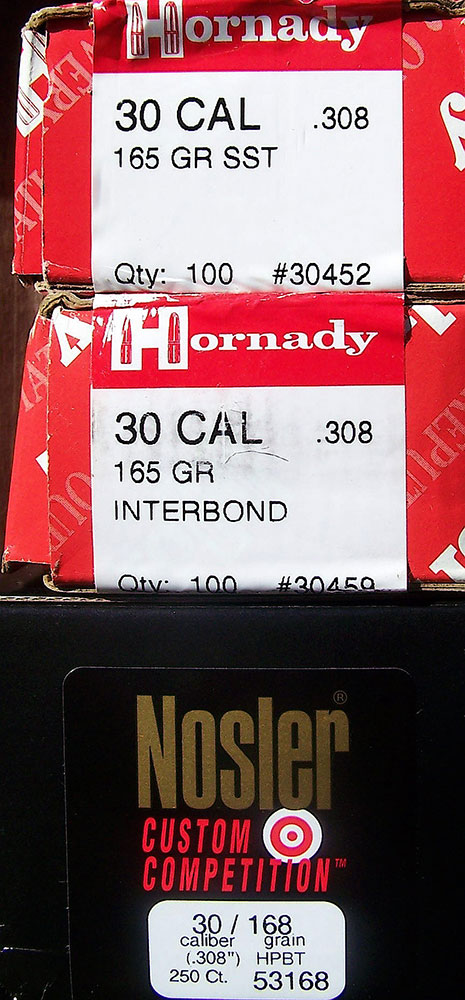
A second very decent CMP rifle delivered 2.0-inch groups on demand. This is well within the results to be had with other wartime Garands and overall good results. My results were good to excellent considering the age of the rifle and the semi automatic action. As a backup, I tested several of the most promising loads in my vintage Steyr .30-06 bolt gun. While not becoming distracted by the graceful Steyr, and its set trigger and excellent sights, results were excellent with a couple of the loads using the Nosler 168-grain bullets producing brilliant sub MOA groups. These are accurate loads and I can shoot. They brought out the best in the Garand. We simply must accept that best.
En Bloc Clips — Loading the M1 Garand
Be certain the cartridges are staggered in the clip and that the cartridge case head is pressed fully to the rear. A cartridge that is too far forward will tie up the gun. My top-quality clips came from Amherst Depot. Amherst offers specialty two- and five-shot clips that proved invaluable in working up handloads and eliminating the need to load eight rounds on demand. To load the Garand, first lock the bolt to the rear. Press the clip into the rifle and the clip will lock firmly in place. The locking handling is pressed to the rear with the back of the hand and allowed to fly forward, loading the rifle. Improper technique results in the thumb running forward into the chamber. This was known as the M1 thumb or Garand thumb. It is to be avoided.
Load Procedures
Each case was full-length resized with the RCBS small base dies. All primers were Winchester large rifle.
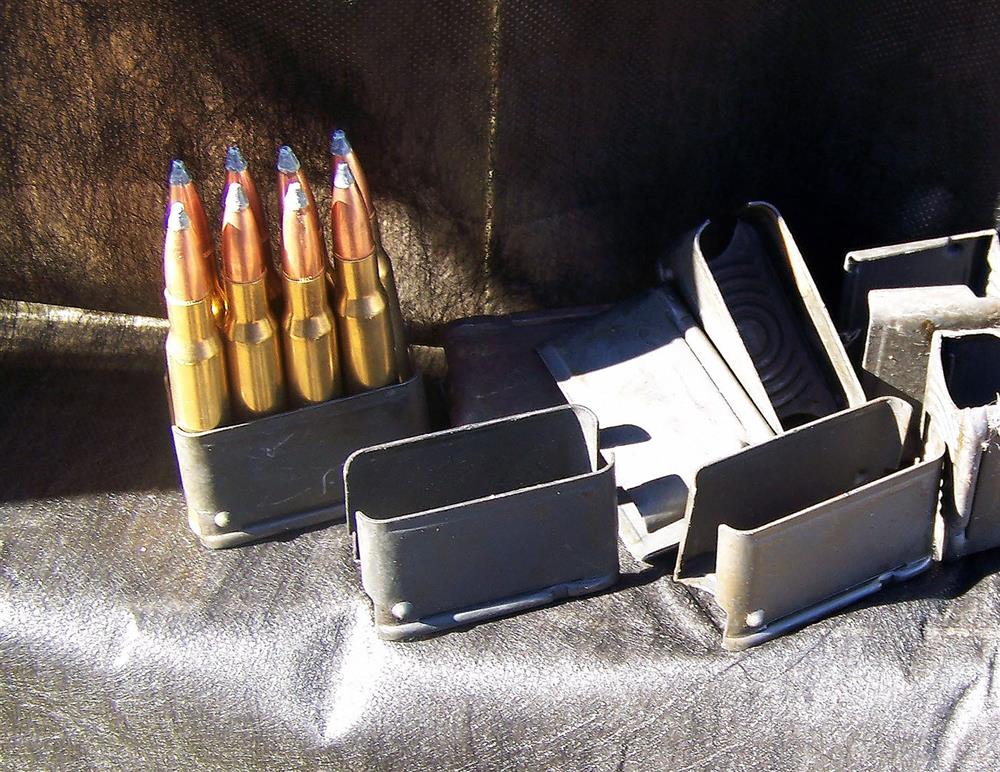
Author’s Note: Since the Garand has a floating firing pin, match grade primers are contra indicated. Never ever load a cartridge in the chamber and then allow the bolt to fly forward! The result may be a slam fire.
The goal was to find the sweet spot for powder performance with good accuracy and reliable function. When firing offhand, the gilt-edged accuracy of one load or the other did not matter as much, but when firing from the benchrest, the differences in load accuracy became apparent.
Handloading the Garand takes little more skill than loading for any other centerfire rifle, once you get started with the proper technique. It is easier once you realize that you abandon accuracy tricks such as seating the bullet just in the leade, and experimentation with very light and very heavy loads. You have fewer options.
Load up and get shooting. Get the old rifle off the rack and to the range, and you will find hours of enjoyment waiting.
M1 Garand Results
The groups were fired in three-shot groups at 100 yards. The barrel in this rifle was as new, the stock was a perfect fit that had not been compressed by firing, and the trigger was excellent for a Garand. Groups with a rifle such as this were as expected—2 to 4 inches average.
Powder, Charge |
Velocity |
100-Yard Group |
|---|---|---|
Hornady 150-grain FMJ – 3.250 OAL | ||
| Hodgdon H 4895, 51.0 | 2,901 fps | 1.75 inches |
| Accurate 2495, 51.0 | 2,750 fps | 1.75 inches |
*********** |
||
Hornady 150-grain JSP – 3.250 OAL | ||
| Hodgdon H 4895, 50.5 | 2,857 fps | 1.25 inches |
| Accurate 2520, 50.0 | 2,839 fps | 1.5 inches |
*********** |
||
Barnes X Bullet 150-grain Moly Coat – 3.285 OAL | ||
| Accurate 2520, 50.0 | 2,778 fps | 1.4 inches (This a super hunting load and a great surprise in the Garand.) |
*********** |
||
Hornady 165-grain SST – 3.296 OAL | ||
| H 4895, 47.5 | 2,754 fps | 1.5 inches |
*********** |
||
Hornady 165-grain Interbond – 3.295 OAL | ||
| H 4895, 47.5 | 2,780 fps | 1.9 inches |
*********** |
||
Nosler Partition 168-grain Hollow Point Boattail – 3.295 OAL | ||
| Accurate 2495, 46.0 | 2,595 fps | 1.5 inches |
| Accurate 2520, 47.0 | 2,600 fps | 1.75 inches |
| IMR 4895, 47.5 | 2,729 fps | 1.95 inches |
*********** |
||
Sierra 168-grain BTHP – 3.295 OAL | ||
| Varget, 50.5 | 2,831 fps | 1.75 inches |
| Hodgdon H 4895, 47.0 | 2,656 fps | 1.45 inches |
*********** |
||
Sierra Palma 155-grain BTHP – 2.775 OAL | ||
| Accurate 2520, 46.0 | 2,750 fps | 1.6 inches |


